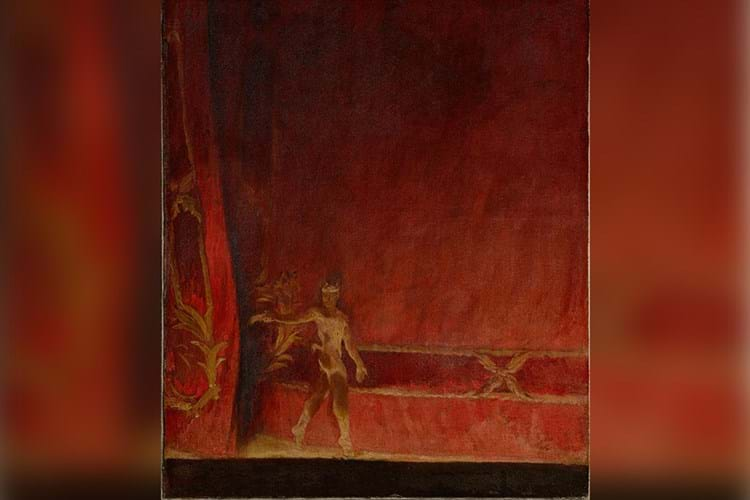
Nijinksy before the Curtain by Glyn Philpot (1884-1937) depicts the Russian ballet dancer taking a curtain call after a performance of L'Après-midi d'un faune. The work shows Nijinksy in costume as the faun on stage at the Royal Opera House in Covent Garden, London, where he performed in the UK premiere of the ballet in 1913.
Nijinsky was the greatest male dancer of his generation. By 1912, he had begun choreographing original ballets including L'Après-midi d'un faune, Jeux and Till Eulenspiegel.
According to the DCMS announcement the, ballet evoked in this painting caused controversy because of the graphic depiction of sexual desire in the final scene and the overtly erotic subtext of the piece. The Ballets Russes had a profound effect on British art and culture, as prior to their visit in 1913 there was no national school of ballet or any permanent companies in Britain, unlike many other European countries.
The decision to issue the temporary export block follows the advice of the Reviewing Committee on the Export of Works of Art and Objects of Cultural Interest (RCEWA) which made its recommendation on the grounds of the painting’s outstanding significance for the study of the history of dance.
Philpot specialised in male portraiture, including, sometimes controversially, the male nude. Among his subjects were the poet Siegfried Sassoon and the operatic tenor Vladimir Rosing.
Representations of Nijinsky in British collections are very rare.
Highly significant
Arts minister Rebecca Pow said: “Nijinksy is one of the most famous dancers of the 20th century and his impact on our cultural history is huge. Thousands of children across the UK attend dance lessons every day and this is due in no small part to Nijinsky and the Ballets Russes introducing ballet to the British cultural scene. I hope that a buyer can be found to keep this important work in the country.”
RCEWA committee member Pippa Shirley said: “This painting is a highly significant work of art in its own right, but perhaps more than that, it captures a seminal but fleeting moment in the history of dance. It shows Nijinsky, arguably the greatest dancer the world has seen, in a rarely depicted curtain call for the first ballet which he choreographed himself and at precisely the moment when he was taking the British stage by storm with the Ballets Russes.
“It is an unusual and powerful image, which tells us much about the impact of a cultural phenomenon on the artistic life of the country at the time, influencing the public, artists and patrons alike.”
The decision on the export licence applications for the painting will be deferred until October 18 which can be extended until January 18, 2020, if a serious intention to raise funds to purchase it is made at the recommended price of £450,000 plus VAT.
The painting was previously in the collection of Sir Philip Sassoon. It was bequeathed in 1939 to his cousin Hannah Gubbay (d.1968) and bought by a UK private collector in the 1980s, then owned by descent until 2017. It is believed it was sold last year to the current owner.





